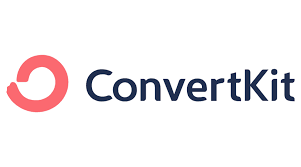Welcome to our comprehensive guide where we put two of the most talked-about email marketing tools, ConvertKit and Campaigner, head to head. As 2024 unfolds, choosing the right tool can be a game-changer for your email marketing strategy. Whether you’re a seasoned marketer or just starting out, this guide will help you navigate through the features, strengths, and suitability of each tool. Let’s dive right in, shall we?
| ConvertKit | Campaigner |
|---|---|
 |  |
| G2 Score – 4.4 out of 5 stars | G2 Score – 4.8 out of 5 stars |
| TrustRadius Score – 8.8 out of 10 | TrustRadius Score – 8.5 out of 10 |
User-Friendliness: Navigating ConvertKit and Campaigner
When it comes to email marketing tools, user-friendliness is a big deal. After all, no one wants to spend hours figuring out how to send a simple newsletter.
ConvertKit: A Haven for Simplicity Lovers
ConvertKit has always been praised for its straightforward, no-fuss interface. From the moment you sign up, you’re greeted with a clean, intuitive dashboard. Navigation is a breeze with clearly labeled tabs and a minimalistic design. This simplicity doesn’t take away from its power, though. ConvertKit packs a punch with features, all while ensuring you don’t get lost in a maze of complexity. It’s perfect for those who want to get their campaigns up and running without the hassle of a steep learning curve.
Campaigner: Feature-Rich but with a Twist
Campaigner, on the other hand, takes a different approach. It offers a wealth of features, but with that comes a slightly more complex interface. If you’re new to email marketing tools, you might need a moment to get acquainted with its layout. However, once you get the hang of it, Campaigner unfolds as a tool rich in functionality. For those who don’t mind a bit of a learning curve in exchange for advanced features, Campaigner might just be the right pick.
Setting Up Your First Campaign: A Test of Ease
The true test of user-friendliness is often how easy it is to set up your first campaign. With ConvertKit, setting up your first email campaign feels almost effortless. There’s a logical flow to the process – from choosing your audience to designing your email and finally hitting send. Plus, ConvertKit offers helpful tips and tutorials along the way, making sure you’re supported at each step.
Campaigner requires a bit more hands-on effort. The platform offers a variety of customization options, which is great, but it can be a bit overwhelming at first. You have more controls to play with, more settings to tweak, and a broader range of templates to choose from. This is fantastic for the seasoned marketer but might be a tad too much for a beginner. In the end, if you’re looking for a tool that’s easy to use, quick to set up, and still powerful, ConvertKit is your go-to option. But if you’re willing to climb a slightly steeper learning curve for a more feature-rich environment, Campaigner could be your ideal match.
Email Design and Customization: Crafting Your Message
Diving deeper into ConvertKit and Campaigner, let’s explore their capabilities in one of the most creative aspects of email marketing: email design and customization. After all, the look and feel of your emails play a pivotal role in engaging your audience.
ConvertKit: Embracing Elegance and Simplicity
ConvertKit takes a minimalist approach to email design. It offers a range of simple, elegant templates that are a breeze to customize. What ConvertKit lacks in flashy design elements, it makes up for with its focus on content. The email editor is intuitive, making it easy to insert text, images, and basic layout changes without any fuss. This simplicity is ideal for those who prefer their messages to be straightforward and content-focused.
Campaigner: A Playground for Creatives
Campaigner, in contrast, is like a playground for those who love to experiment with design. It offers a more extensive range of templates, along with advanced customization options. You can tweak almost every aspect of your email, from intricate font styles to complex HTML elements. This level of detail is perfect for marketers who see each email as a unique opportunity to express their brand’s personality.
Customization for Different Audiences
Both platforms handle audience customization differently, catering to diverse marketing strategies. ConvertKit’s strength lies in its ability to personalize content easily. You can segment your audience based on various criteria and tailor your messages to suit different groups. This personal touch doesn’t require complicated setups, making ConvertKit an excellent tool for creating personalized content quickly and efficiently. Campaigner offers more advanced segmentation features, allowing you to drill down into the nitty-gritty of your audience’s behaviors and preferences. This advanced segmentation can lead to highly targeted emails, but it also means spending more time setting up your campaigns.
Design Tools: Accessibility vs. Complexity
The tools each platform offers for designing emails also differ significantly. ConvertKit’s design tools are straightforward, making them accessible even for those without a background in design. The focus is on usability, ensuring that anyone can create visually appealing emails without requiring extensive design skills. Campaigner’s design tools are more complex, offering a richer palette for experienced users. If you’re comfortable with advanced design concepts and tools, Campaigner provides the flexibility to truly craft unique email experiences.
In summary, when it comes to email design and customization, ConvertKit and Campaigner cater to different preferences. ConvertKit is ideal for those who value simplicity and content over complex design, offering an easy-to-use interface for quick personalization. Campaigner, however, is the better choice for users who prioritize detailed customization and have the skills (or the time to learn) to make the most of its advanced design features.
Deliverability and Analytics: Ensuring Your Message Hits the Mark
A critical aspect of email marketing is ensuring your emails not only reach your audience but also engage them effectively. Let’s delve into how ConvertKit and Campaigner perform in terms of deliverability and analytics, key components in measuring the success of your email campaigns.
ConvertKit: High Deliverability with Insightful Analytics
ConvertKit prides itself on its high deliverability rates. By maintaining strong relationships with Internet Service Providers (ISPs) and following best practices, ConvertKit ensures your emails stand a great chance of reaching the intended inboxes. In terms of analytics, ConvertKit offers clear and concise reports. You can easily track open rates, click rates, and subscriber growth, among other metrics. These insights are presented in an easy-to-understand format, making it straightforward for you to assess the performance of your campaigns and make data-driven decisions.
Campaigner: Robust Deliverability and In-Depth Analytics
Campaigner also boasts strong deliverability, backed by rigorous anti-spam policies and active reputation management. Where Campaigner really shines, though, is in its in-depth analytics. It goes beyond basic metrics, offering detailed insights into subscriber behavior, geographical data, and even device usage. This level of detail is invaluable for marketers looking to deeply understand their audience and tailor their strategies accordingly.
Understanding Your Audience: Segmentation and Reporting
Both platforms offer tools for understanding and segmenting your audience, but they do so in different ways. ConvertKit’s segmentation tools are straightforward, allowing you to categorize your subscribers based on simple criteria like engagement level or interests. This simplicity makes it easy to create and send targeted campaigns without getting bogged down in data analysis. Campaigner offers more advanced segmentation tools, enabling you to create highly specific groups based on a wide range of criteria. This granularity is perfect for sophisticated marketing strategies but does require a more in-depth understanding of your audience and data.
Analytics and Reporting: Simplicity vs. Depth
The approach to analytics and reporting also varies significantly between the two platforms. ConvertKit’s analytics are designed to be user-friendly, offering quick insights into your campaign’s performance. The platform provides the essential information you need to understand how your emails are performing without overwhelming you with data. Campaigner’s reporting features are more comprehensive, catering to data-driven marketers who crave depth in their analytics. With its advanced reporting capabilities, you can dive deep into the data, uncovering insights that can help refine your strategies for even better results.
Both ConvertKit and Campaigner excel in deliverability, ensuring your emails reach your audience. When it comes to analytics, ConvertKit is ideal for those who prefer simplicity and ease of understanding, offering clear insights without overwhelming detail. Campaigner, however, is the better choice for marketers who want to delve deep into analytics and gain detailed insights to inform their strategies.

Related: Check out our free SEO suite

Automation and Workflow Integration: Streamlining Your Email Marketing
The ability to automate and integrate email marketing into broader workflows is essential for efficiency and effectiveness. Let’s explore how ConvertKit and Campaigner fare in these crucial areas.
ConvertKit: Simplifying Automation for Efficiency
ConvertKit is known for its user-friendly approach to automation. Its automation features are designed to be intuitive, allowing you to set up automated email sequences, tag subscribers based on their actions, and trigger emails based on specific events with ease. This simplicity is a huge advantage for those who want to automate their email marketing without getting lost in complex workflows. Additionally, ConvertKit integrates seamlessly with a wide range of other tools and platforms, from eCommerce solutions to CRM systems, making it a versatile choice for a variety of business needs.
Campaigner: Advanced Automation for Comprehensive Control
Campaigner offers more advanced automation features, suited for those who need detailed control over their email marketing processes. Its automation capabilities include complex triggers, conditional workflows, and detailed segmentation, offering a high degree of customization. This level of sophistication is great for large-scale campaigns or businesses with specific automation needs. Campaigner also provides strong integration options, though they may require a bit more technical know-how to set up compared to ConvertKit.
The Power of Workflow Integration
Both platforms recognize the importance of integrating email marketing with other business processes and tools. ConvertKit’s integration capabilities are designed with simplicity in mind. Its straightforward API and numerous built-in integrations make it easy to connect with other tools, enhancing your overall marketing strategy without adding complexity. Campaigner offers robust integration options, catering to businesses with complex or specialized integration needs. While its integration capabilities are powerful, they may require a more technical approach to fully leverage.
Automating for Engagement and Growth
Automation isn’t just about saving time; it’s also about engaging your audience effectively and growing your subscriber base. ConvertKit’s automation tools are excellent for creating personalized engagement with your audience. You can set up automated sequences that feel personal and targeted, fostering a deeper connection with your subscribers. Campaigner’s advanced automation features are ideal for scaling your email marketing efforts. With its detailed control and customization, you can create highly targeted and effective automated campaigns that drive growth.
In summary, when it comes to automation and workflow integration, ConvertKit stands out for its ease of use and simplicity, making it an excellent choice for businesses that value efficiency and straightforward processes. Campaigner, with its advanced features and customization options, is better suited for businesses with complex automation needs and those who require detailed control over their email marketing workflows.
Pricing and Affordability: Evaluating the Investment
When selecting an email marketing tool, understanding the pricing structure and evaluating the return on investment is crucial. Let’s compare ConvertKit and Campaigner in terms of their pricing models and the value they provide.
| ConvertKit | Free Plan: Offers basic features for up to 1,000 subscribers, including email broadcasts, landing pages, and forms. Creator Plan: Starting at $29/month for up to 1,000 subscribers, including automation and third-party integrations. The price increases with more subscribers. Creator Pro Plan: Starting at $59/month for up to 1,000 subscribers, adding advanced features like newsletter referral system, subscriber scoring, and advanced reporting. |
| Campaigner | Starter Plan: Begins around $59 per month for up to 5,000 contacts, including basic email marketing features and 24/7 support. Essential Plan: Priced around $179 per month for up to 25,000 contacts, adding features like advanced segmentation and A/B testing. Advanced Plan: Starting from around $649 per month for up to 50,000 contacts, offering advanced automation, reporting, and integrations. eCommerce Plan: Designed specifically for eCommerce businesses with custom pricing, including features like purchase behavior tracking and predictive analytics. |
ConvertKit: Transparent Pricing with Scalability
ConvertKit offers a pricing model that’s both transparent and scalable. It primarily charges based on the number of subscribers, making it easy to predict expenses as your list grows. The platform offers a free plan for beginners, which includes basic features suitable for getting started. As you scale up, the price increases, but so does access to more advanced features like automation and premium support. ConvertKit positions itself as a cost-effective solution, especially for bloggers, small businesses, and content creators, offering a good balance between functionality and price.
Campaigner: Flexible Pricing for Diverse Needs
Campaigner’s pricing structure is a bit more complex, with several tiers based on features and level of support. Its free trial allows you to test the waters before committing. The paid plans vary, offering more advanced features like segmentation, automation, and integration capabilities at higher tiers. Campaigner’s pricing can be competitive, especially considering the advanced features it provides, making it a good choice for businesses that require more sophisticated email marketing tools.
Assessing Value for Money
Both ConvertKit and Campaigner offer different value propositions when it comes to pricing. ConvertKit’s value lies in its simplicity and effectiveness, particularly for creators and small businesses. The platform’s ease of use, combined with powerful features at higher tiers, offers a solid return on investment by saving time and improving campaign effectiveness. Campaigner, with its advanced features, offers a high potential return on investment for businesses that can fully utilize its capabilities. The ability to create highly targeted and sophisticated campaigns can translate into higher engagement and conversion rates, justifying the investment in the more expensive plans.
In summary, both ConvertKit and Campaigner provide good value for money, but in different ways. ConvertKit is an excellent choice for those seeking an easy-to-use platform that grows with their business, offering a balance of features and affordability. Campaigner, on the other hand, is ideal for businesses willing to invest in advanced features and who need a more robust email marketing solution.
Final Thoughts
As we wrap up our detailed comparison of ConvertKit and Campaigner, it’s clear that both platforms have distinct strengths and cater to different needs in the email marketing realm. ConvertKit emerges as a stellar choice for content creators, bloggers, and small businesses. Its user-friendly interface, straightforward pricing, and focus on ease of use make it an ideal tool for those starting out or looking to streamline their email marketing efforts. ConvertKit’s strength lies in its simplicity and efficiency, allowing users to focus on creating engaging content without getting bogged down by technical complexities.
Campaigner, on the other hand, is a powerhouse for businesses and marketers who crave depth and customization. Its advanced features, detailed analytics, and robust automation capabilities make it suitable for sophisticated marketing strategies. Although it comes with a steeper learning curve and a more complex pricing structure, Campaigner offers the tools necessary for highly targeted, effective email marketing campaigns. Ultimately, the choice between ConvertKit and Campaigner in 2024 depends on your specific marketing needs, skill level, and goals. If you value simplicity, straightforward pricing, and ease of use, ConvertKit is the way to go. However, if you’re looking for advanced features, detailed analytics, and greater customization, Campaigner might be your ideal partner in email marketing.
In the fast-evolving world of digital marketing, staying informed and choosing a tool that aligns with your strategy is crucial for success. Whether you opt for ConvertKit or Campaigner, you’re equipped with a powerful tool to enhance your email marketing efforts and connect with your audience in meaningful ways.
Read Next
- ConvertKit vs Benchmark Email: The Best Email Marketing Tool for 2024
- ConvertKit vs MailerLite: The Best Email Marketing Tool for 2024
- ConvertKit vs Campaign Monitor: The Best Email Marketing Tool for 2024
- ActiveCampaign vs ReachMail: The Best Email Marketing Tool for 2024
- ActiveCampaign vs SalesHandy: The Best Email Marketing Tool for 2024






















Comments are closed.